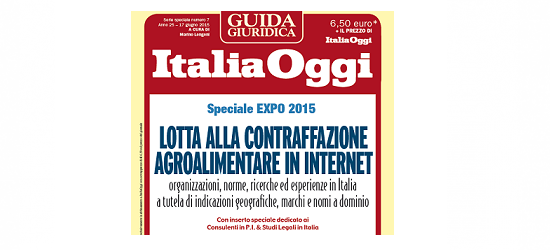
Anna Carmignato, Trademark Consultant – Arkonsult Div. Baldissera Brevetti, Padova
Sometimes the OHIM procedure seems controversial in judging conflict of subsequent trademarks with prior rights protected both as registered trademarks and denominations of origin according to the related EC Regulations, primarily, the Regulations EC 2081/92 and EC 510/06. The present case appears actually symbolic. It regards the Opposition decision issued on 30/06/2010 procedure No. B1165135 where the Consorzio of Parmigiano Reggiano was opposed to a German Company owner of Community trademark application for mark GRANOREGGIO among others for cheese, milk and dairy products (int.cl. 29). The opposition basis was the conflict with prior protected denomination of origin (art. 8.4 EC Reg. 40/94) and with well-known trademark (art. 8.5 cit. Reg.), and not least the risk of confusion and association between similar trademarks for identical and similar goods (art. 8.1.b cit.).
The opponent made reference moreover to trademark GRANA PADANO® on the basis of art. 13 Reg. EC 510/06 cit. that provides the protection of registered denominations against “any other false or misleading indication as to the provenance,…or essential qualities of the products…” (letter c) and “any other practice liable to mislead the consumer as to the true origin of the products” (letter d). The opposed trademark in its components GRANO and REGGIO evoked GRANA (PADANO) and PARMIGIANO REGGIANO respectively (the emphasis is ours), leading to believe that cheeses and foods marked GRANOREGGIO have been made of blends of products marked GRANA PADANO® and PARMIGIANO REGGIANO®, resulting liable to create a link between different denominations of origin and, then, misleading. The opponent considered that each component of denomination of origin PARMIGIANO REGGIANO® is protected and then a simple comparison between marks should have been enough for accepting opposition.
Moreover, the notoriousness of denomination PARMIGIANO REGGIANO® was evoked in the opposed mark in its component – REGGIO with evident reference to the city of Reggio Emilia, main seat of the Consorzio and area of production of the cheese itself. With regard to products, moreover, the opponent claimed a extended protection including also the other classes claimed by the opposed mark (30 and 31) on the basis of the cited Reg. 510/06, art. 13 letters b,c,d. There was no doubt that foods marked GRANOREGGIO could be dangerous to the notoriousness of the trademark PARMIGIANO REGGIANO® making an unjustified link between marks and deriving a unjust advantage from the quality and notoriousness of the prior trademark.
As to all these arguments, the OHIM judgement appears at least questionable. The opposition in fact has been rejected for absence of the risk of confusion both of great part of the products and of the marks found different from the phonetic and conceptual point of view; the notoriousness rejected for lack of proofs; rejected also the risk of confusion on the basis of EC regulations on denominations of origin and geographical indications. In particular, on this point “a protected name is evoked where the term used to designate that product…contains the same number of syllables, with the result that the phonetic and visual similarity…is obvious … In the present case, …The Office considers that the similarities are not sufficient for there to be an “evocation”…in fact…there is no phonetic similarity between the signs” (Opp. Dec. B1165135 cit., p. 15).
The critical aspects of this decision are all interesting. What matters to be evidenced here is the concept of “evocation” on which it looks like the Office has ruled summarily and the opinion that the component “PARMIGIANO” would be the only liable to be protected, where the Regulation EC 510/06 cit. considers all the components of a denomination of origin are protected in the same way. In this sense, the steps made by OHIM such as the publication of the lists of edible and agricultural goods protected by Community Regulations and of Cases of the Court of Justice ruling on denominations of origin and geographical indications appear encouraging and held out to a greater knowledge of such relevant as strategic rights in particular for a Country as Italy.
